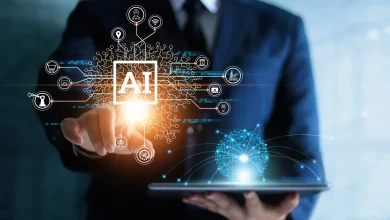Blending Beauty and Practicality in Dining Spaces
Designing a restaurant is one of those tasks that sounds fun until you’re knee-deep in floor plans, color swatches, and furniture catalogs. Sure, it’s about making a space look beautiful, but if it doesn’t work—if servers can’t move without bumping into guests, if the lighting makes the food look unappetizing—then all that beauty won’t matter. The magic is in finding the sweet spot between form and function. That’s where the best AI Restaurant Design tools come in. They let you play with ideas, test out layouts, and imagine the vibe long before you’ve ordered a single chair.
Cutting Through the Chaos of the Planning Stage
Anyone who’s opened a restaurant will tell you the early planning stage can be a mess. You’ve got sketches piling up, Pinterest boards overflowing, and a dozen different opinions in the mix. In the old days, you’d send designs back and forth for weeks—sometimes months—before you landed on something everyone could agree on. Now? You can spin up five or six solid concepts in an afternoon. The AI doesn’t replace your vision; it just gets you to the “Oh wow, that actually works” moment a whole lot faster.
Seeing the Flow Before the First Table Arrives
A layout isn’t just dots on a blueprint—it’s the rhythm of the space. Think about the Friday dinner rush: trays weaving between tables, guests scooting in and out of seats, the kitchen door swinging open and shut. One awkward choke point and the whole flow falls apart. With AI tools, you can actually see how people might move through your space before anything is built. It’s like having a rehearsal before opening night, spotting the trouble spots, and fixing them before they ever become a problem.
Designing a Mood That Matches the Menu
A restaurant’s look should feel like an appetizer for the meal itself. Imagine walking into a seafood place that smells faintly of the ocean and is wrapped in deep blues, sandy beige accents, and soft golden lighting. Or stepping into a cozy Italian trattoria where the lighting is dim enough for romance but bright enough to see the wine list without squinting. With AI tools, you can test dozens of these moods in minutes—swapping wall colors, adjusting table spacing, or trying out a different light warmth until it clicks. And the best part? You’re designing with maintenance in mind, so those gorgeous walls aren’t impossible to clean after a busy weekend.
Experimenting Without the Price Tag Panic
Here’s something every restaurant owner dreads: spending thousands on a design direction, only to realize halfway through that it’s not quite right. Traditional design means every revision costs time and money. AI changes that. You can try bold, even risky ideas—patterned tile floors, deep green velvet banquettes, oversized pendant lights—without committing a dime to materials yet. Sometimes those “What if we…” experiments turn into the signature look guests remember. And if it doesn’t work? No harm done. You just click “generate” again and move on.
Getting Everyone on the Same Page
Restaurant design is rarely a solo decision. There are owners, chefs, investors, and sometimes even marketing folks weighing in. Words like “cozy” or “modern” mean totally different things to different people. That’s why AI renderings are such a game-changer—you’re showing, not telling. You can hand someone a visual and say, “Like this?” and they can immediately say yes, no, or “What if the bar was over there?” It cuts down on endless back-and-forth emails and keeps the project moving.
From Screen to Reality
A beautiful render is just the start. The challenge is making it look just as good in real life. AI tools help bridge that gap by providing measurements, material suggestions, and even lighting specs contractors can actually use. That means fewer “Uh-oh” moments when something doesn’t fit or doesn’t match. By the time the space is built, it’s already been fine-tuned for both looks and logistics. And there’s nothing better than standing in the finished dining room, seeing customers relax into their seats, and thinking, “Yep. This turned out exactly how I pictured it.”
Final Thoughts: The Real Win
AI restaurant design tools aren’t some magic wand that instantly makes a space perfect. You still need taste, vision, and an understanding of how people interact with a room. But these tools make the process a whole lot smoother—and, honestly, a lot more fun. They give you room to play, to fail fast, and to get it right without burning through your budget. In the end, the goal is simple: create a restaurant that looks stunning, runs smoothly, and makes people want to come back. If AI can help you get there faster, why not use it?





